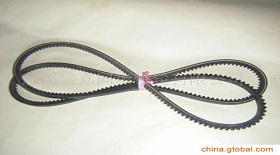V belt design
(1) V belts are usually endless loops. To facilitate installation, shaft spacing and preload should be adjusted. For the transmission without tension wheel, the bearing position of one shaft should be able to move along the long direction.
(2) The transmission structure should be convenient for the installation and replacement of the V belt.
(3) Horizontal or near-horizontal belt drive should make the tight edge of the belt down, loosing edge on the top, which can increase the small pulley wrap angle.
(4) In order to avoid the uneven load distribution of V-belt, the length of V-belt on the same pulley should be matched. All replacement must be replaced at the same time.
(5) The use of the tension wheel transmission will increase the number of flexural torsion and shorten the life of the belt.
(6) In the transmission device, the flatness of the center plane of the groove corresponding to the two pulleys should be less than 0.002a (a-shaft spacing). The flatness of the pulley axis should be less than 0.006a.
(7) Ordinary V belts and narrow V belts must not be mixed in the same transmission device.
V-belt type selection: according to the design power of the belt drive P and the speed of small pulley n according to the diagram, the belt type is selected according to the standard, the space position requirements of the drive and the number of belts must be considered before the final determination.



